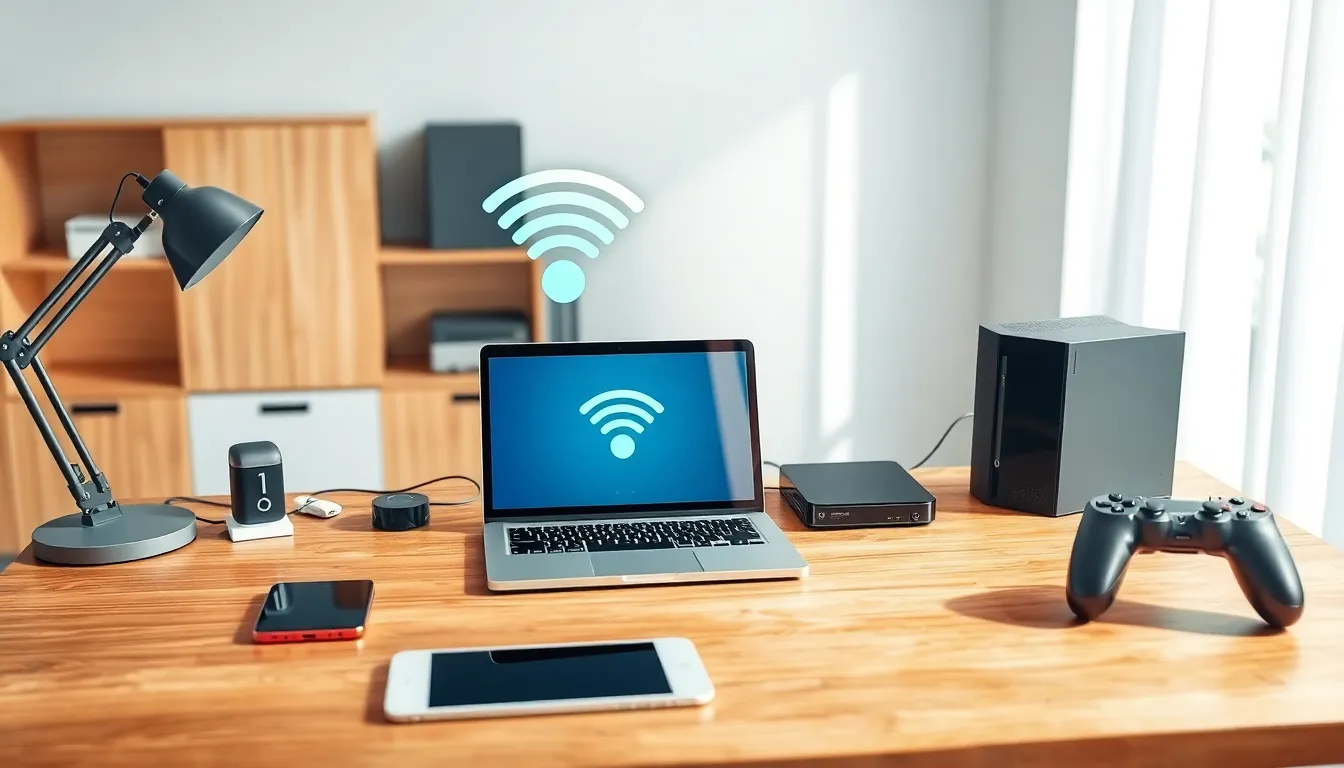In today’s world, a reliable home network isn’t just a luxury; it’s a necessity. Imagine trying to stream your favorite show while your Wi-Fi acts like it’s stuck in the Stone Age. Frustrating, right? A solid home networking service can turn that digital chaos into a seamless experience, allowing everyone to surf, stream, and game without a hitch.
Table of Contents
ToggleUnderstanding Home Networking Service
Home networking service encompasses the setup and maintenance of connected devices within a residence, ensuring seamless data transfer and communication. This service caters to various homes, enabling a reliable internet experience.
What Is Home Networking Service?
A home networking service establishes a network that links multiple devices like computers, smartphones, and smart home equipment. Routers and switches facilitate connections, creating a robust framework for internet access. Technicians often configure these networks to deliver optimal performance for streaming, browsing, and gaming. Users typically seek these services for efficient device management and enhanced connectivity within their living spaces.
Benefits of Home Networking Services
Enhanced connectivity is a primary benefit of home networking services. Users experience faster internet speeds, particularly when streaming high-definition content or participating in online gaming. Reliable connections allow multiple devices to operate simultaneously without interruptions. Security features also improve with professional setups, protecting personal data from unauthorized access. Additionally, technical support is often included, ensuring prompt assistance for any networking issues that arise.
Types of Home Networking Services


Home networking services provide various solutions to enhance connectivity at home. Two primary categories exist: wired and wireless networking solutions.
Wired Networking Solutions
Wired networking solutions offer reliable connections for devices through physical cables. Ethernet cables typically connect computers, gaming consoles, and printers to a router or switch. These setups generally provide faster speeds and lower latency compared to wireless options. They suit environments where high bandwidth is essential, such as in homes with multiple users engaged in streaming or gaming simultaneously. While installation may require some effort, many users prefer wired networks for their stability and security features.
Wireless Networking Solutions
Wireless networking solutions utilize Wi-Fi technology to connect devices without physical cables. Routers broadcast signals to smartphones, tablets, and laptops throughout the home. This flexibility allows users to roam freely while staying connected. Modern Wi-Fi standards, such as Wi-Fi 6, deliver enhanced speeds and improved performance for multiple devices at once. Wireless networking accommodates smart home devices seamlessly and simplifies installation processes. While it may face interference issues, advancements continue to improve the reliability of wireless networks.
Factors to Consider When Choosing a Home Networking Service
Choosing the right home networking service involves several crucial factors that enhance the user experience and connectivity. For optimal performance, consider the following aspects.
Internet Speed Requirements
Internet speed requirements vary based on user activity. Streaming services demand higher speeds, typically ranging from 25 Mbps to 100 Mbps, while online gaming might require speeds exceeding 50 Mbps. Households with multiple users often benefit from faster plans, especially when devices stream or download simultaneously. Assessing individual needs ensures users select a plan that supports their specific usage, avoiding sluggish connections and interruptions.
Coverage and Range
Coverage and range play a significant role in network effectiveness. A reliable solution should provide strong signal strength throughout the home, ensuring all devices connect without hassle. Larger spaces may require additional access points or range extenders to eliminate dead zones. Consider the type of construction materials in the home as they affect signal propagation; brick and concrete can weaken signals significantly. Evaluating the layout and size of the property allows for informed decisions regarding layout and equipment to maximize coverage.
Setting Up Your Home Networking Service
Setting up a home networking service involves selecting the right equipment and following effective installation tips for optimal performance.
Equipment Needed
Essential equipment for a robust home network includes a reliable router, network cables, and potentially a switch or access point. Routers connect multiple devices and manage internet traffic, making them crucial for efficient operation. Network cables provide wired connections that ensure faster speeds, which are ideal for high-bandwidth activities. In larger homes, a switch may expand connectivity options, allowing more devices to connect seamlessly. An access point extends Wi-Fi coverage, enhancing signal strength in areas with weaker connections. Finally, consider purchasing a modem if using a cable internet service, as this connects the home network to the internet service provider.
Installation Tips
Start by positioning the router in a central location within the home to optimize Wi-Fi coverage. Clear line of sight helps minimize interference from walls and furniture. Secondly, connect devices using network cables for improved stability and speed, especially for gaming and streaming activities. Configure the router settings by accessing its dashboard, usually found via an internet browser. This enables personalized Wi-Fi names and passwords, enhancing security. Regularly update firmware to maintain performance and security standards. Lastly, utilize apps or websites to analyze Wi-Fi coverage, identifying areas needing better signal strength and making adjustments accordingly.



